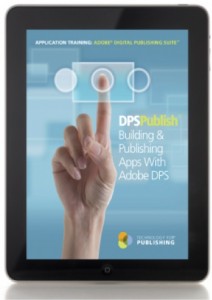 Learning the many steps required to publish an app can feel challenging to new app creators, but with a little knowledge and a few handy tips, getting from novice to expert can be quick and easy.
Learning the many steps required to publish an app can feel challenging to new app creators, but with a little knowledge and a few handy tips, getting from novice to expert can be quick and easy.
TFP’s new DPSPublish™ series offers detailed, step-by-step instructions to help you get there. Check out the handbooks, in print or interactive PDF format, and the app—now available on iTunes.
Here are some of our most popular tips and best practices to help you get started.
Create a Custom Viewer
Any DPS App Builder user has the option to create their own custom Adobe Content Viewer for testing purposes within their organization. Creating an organization-specific version is preferred over using the generic version in the App Store, because it can be readily accessed and downloaded from a central location, and easily updated whenever necessary to keep in line with your organization’s release version.
Organize App Data With a Spreadsheet
It is recommended that users creating apps keep a spreadsheet or a log of all files created that includes file names, locations, and passwords. Anyone who purchases TFP’s DPSPublish Online Training receives our DPS Publish Checklist, a comprehensive checklist to manage all required information for building an app. It’s a convenient and useful tool to keep close by while creating your app.
Understand Apple Developer Enrollment Names
If you haven’t yet established your developer account, read this first! It’s important to know that users can enroll in the Apple Developer program as individuals or as a company. Be sure to consider each option carefully, because the name selected will be listed as the developer of the app in the iTunes store. Most developers prefer to have a company name listed rather than their personal name.
Know the Different Certificate Types
When creating certificates and other files in the iOS Dev Center, both development and distribution certificate files are created for an app.
A development version is usually created first for testing purposes. This allows the creation of an internal, non-distributable version that can be thoroughly tested and approved before the final distribution version is created. Because of this, there are two different certificate types that control the behavior and distribution abilities for these two variations of an app.
Plan for App File Organization
If you’ve been through your first few tries of creating an app, you know that it’s highly likely you’ll end up with a number of files scattered across your hard drive, and you may remember pulling your hair out trying to determine which file belonged where. For your next app—or, if this is your first app—do it right. Create a primary folder to house all of the files created for your app. Create subfolders to help sort and organize the files you create. Here’s our suggested list:
- Developer Certificates and Provisioning Files
- iTunes Connect App Assets (your icon and screenshots)
- DPS App Builder Assets
- App Files (those generated by the DPS App Builder)
- Exported Folio Files (for single-folio apps only, for embedding in your app file)
Test Your Certificates
Occasionally, the process for creating certificates does not complete successfully. In order to make certain that the certificates generated are valid, you can follow a few simple steps to check their integrity before you build your app:
- Launch the Keychain Access utility.
- Select Keys.
- Click the arrow next to the key to display the certificates below it.
- Click on each certificate that needs to be validated and review the information revealed at the top of the dialog.
- Look for the statement “This certificate is valid.” If it is not there, the certificates will need to be regenerated.
Invest in Learning and Best Practices
We work with many app builders who have spent countless hours trying to figure out the app-building process. While it’s not a difficult process, it’s really necessary to see the process before doing it in order to establish the proper sequence for building the app, and to understand best practices. Spending a little time learning now will save hours of time in the long run. We have a long list of app-building warriors who can attest to that. Take advantage of our various knowledge products to help you reduce your learning curve:
- Check out our DPS Tips blog.
- Sign up for our DPS Newsletter—receive updates on briefings, tips, and best practices.
- Download our DPSPublish handbooks as handy reference sources.
- Get our DPSPublish app—it’s been downloaded and used all over the globe to help build great apps!

Posted by: Margot Knorr Mancini


